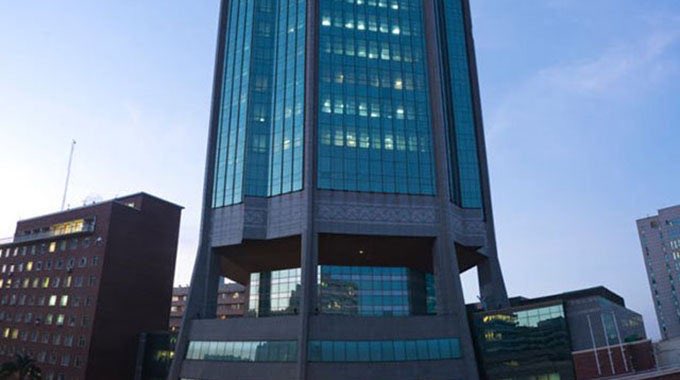|
Getting your Trinity Audio player ready...
|
Writes Persistence Gwanyanya
Now that the Reserve Bank of Zimbabwe (RBZ) has kick-started the transition to a market-based exchange rate mechanism by injecting foreign currency into the interbank market, through the wholesale foreign currency auction system, and removing the limits on forex trading margins, the next step to achieving stability is to boost the Zimbabwe dollar (Zimdollar) demand.
What has been driving the massive Zimdollar sell-off is its limited use, and, therefore, low demand.
When the market exits a currency en masse, as is the case with the Zim dollar, it has the same effect as running the printing press.
That is why monetarists argue that inflation is everywhere and anywhere a monetary phenomenon. Given the current state of affairs, the Government, which wields more than 70 percent market power, is, more than ever, now expected to step in and aggressively push up demand for the Zim dollar through duties, taxes, levies, and fees.
Concomitantly, we expect the current exchange rate and price volatility to subside.
Tightening Zimdollar conditions
To put the need for boosting demand for the Zim dollar into context, a reflection of the monetary balance in the economy is important.
In the two trading sessions conducted so far since the implementation of the wholesale foreign auction system, RBZ sold about US$35 million through the Dutch auction system and wholesale foreign currency auction system, as well as the bureaux de change.
Out of this amount, US$15 million was sold in the first week ending June 10, 2023, and the balance the following week.
An estimated $190 billion has been mopped up from forex sales to banks and bureaux de change so far, which is a significant proportion of the usable balances of around $219 billion at the commencement of the trading sessions two weeks ago. The usable balances mainly comprise the excess reserves, which were mopped up by RBZ through the non-negotiable certificates of deposit. The excess reserves on the RTGs platform have remained very low, at around $0,1 billion, since 2022.
Interestingly, it seems there are very few banks that could afford to purchase US$1 million on the wholesale auction system from their positions, reflecting the tightening Zimdollar conditions in the market.
Assuming no monetary creation in the last two weeks, usable Zimdollar balances would have run down to $29 billion, after $190 billion was mopped up by forex sales to the market.
This translates to US$4,9 million at the current exchange rate of US$1:ZW$5 979.
However, for the sake of being conservative, we chose to maintain the usable balances at $200 billion to cater for bank credit creation, and investment maturities, including Treasury Bills (TBs), and money market instruments that are not rolled over. At the current exchange rate, the assumed usable balances amount to only US$33,5 million. Imagine, this is the money that is giving us migraines. This only demonstrates that our major challenge is confidence.
The maturity profile of Government short-term debt instruments gives us a measure of comfort about the low risk from liquidity injection on account of these maturities.
Out of an amount of $101,6 billion expected to mature in the remainder of 2023, $80,1 billion is maturing in the current second quarter, which entails the injection of Zim dollar liquidity in the market.
On the other hand, money and capital market investments by private players don’t seem to pose much risk to the growth in usable balances as they are concentrated in a few, large well-established entities, most of which have low velocity of money.
Among these players are mining giants, which normally sit on huge Zim dollars from proceeds of foreign currency surrender. However, these players also have significant forex retentions, and, therefore, normally don’t participate in the parallel market.
Big bang approach
Given the statistical reality of the Zimdollar availability, a “big bang” approach by Treasury involving exclusive Zimdollar demand for the half-year quarterly payment dates (QPDs) will shock the market.
Treasury expects to collect about $400 billion from the June QPDs, which are payable by the 25th of that month. Exclusive demand for QPD in Zimdollar is actually expected to result in a deficit of the Zimdollar in the market.
Following the transfer of external debt to the Treasury, the payment mechanism for the 25 percent export surrender from the Budget does not pose a risk of possible money supply growth from RBZ, as before.
Therefore, one should reasonably expect the market to liquidate their forex holdings to meet QPDs, as well as other statutory obligations.
We also expect reduced demand for forex on the wholesale market as Zimdollar conditions continue to tighten. Payment for utilities, mainly electricity, in Zimdollar, is also seen as a major driver to demand. The Government recently enacted Statutory Instrument 93/2023, which compels electricity providers to charge non-exporters for electricity in the local currency.
Zimbabwe Electricity Transmission and Distribution Company (ZETDC) collects about $12 billion-$15 billion per month from electricity purchases.
Treasury has also directed all ministries, departments, and agencies to religiously observe the multicurrency system, which entails acceptance of the Zim dollar for transactions. Some Government departments, ministries, and agencies were accused of rejecting the Zim dollar for payments, directly or indirectly.
As they say, success breeds success.
The moment the market starts liquidating the US dollar, we shall see more voluntary liquidations happening.
This is what will get the market to equilibrium, which essentially means a state of stability.
Going forward, the operationalisation of the digital gold tokens in the transaction space before month-end is seen as creating value for the Zim dollar in the domestic economy.
The value-preservation needs of the market, which is currently not met by both the foreign currency auction systems, will be taken care of by the digital gold tokens.
The reality of the monetary system shows us that a return to stability is possible.
However, this can only happen if the authorities resist any temptation to run the printing press, especially at this time when we are heading towards elections.
It will be prudent to tone down on infrastructure and attend to urgent needs of the economy today, such as health and education, as well as the general welfare of employees and citizens.
◆ Persistence Gwanyanya is a member of the RBZ Monetary Policy Committee. He is also the founder of Bullion International. He writes in his personal capacity. For feedback: WhatsApp +263 773 030 691






